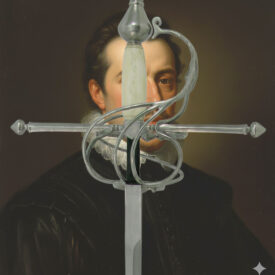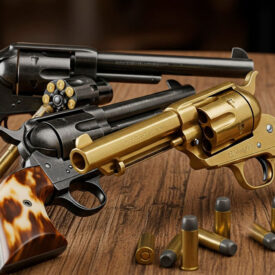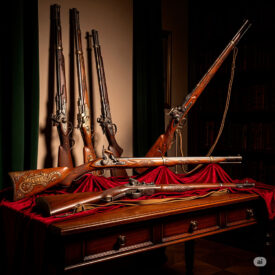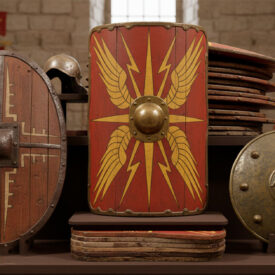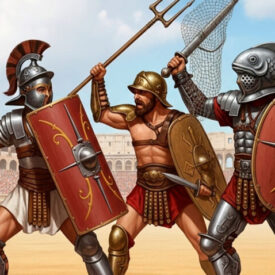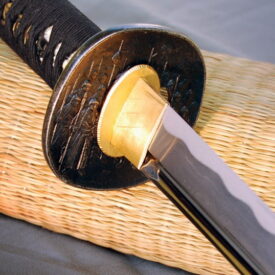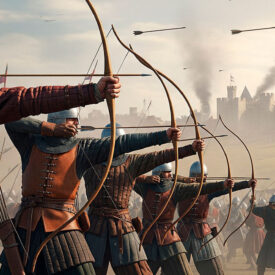Can you imagine the roar announcing the arrival of a man carrying a weapon capable of turning a narrow doorway into a shower of lead and buckshot? The blunderbuss was just that: a loud and forceful presence in the theater of war and defense, a direct ancestor of the modern shotgun that transformed close-quarters confrontations and left an indelible mark on military and popular history.
In this article, we will explore its origin, its technical functioning, the variants that gave it proper names such as “dragon” or “naranjero,” its role in the navy, cavalry, and the conflicts of the 18th and 19th centuries, as well as its cultural legacy and the reasons why it is once again attracting collectors, restorers, and vintage enthusiasts. You will learn to distinguish a blunderbuss from other muzzle-loading firearms, understand its loading process, and grasp why, despite being primitive, it had a notable tactical impact.
Below is a visual chronology to situate the most important milestones in the evolution of the blunderbuss and related firearms.
Blunderbuss and Firearms: Milestones and Historical Evolution
Chronological summary of the main milestones related to the blunderbuss, arquebus, and the evolution of projectiles and firing systems from their origins until the 19th century.
| Period | Fact |
|---|---|
| Middle Ages / Before the 15th Century | |
| Origin of the term “trabuco” (blunderbuss) | The word derives from “trabucar” (to disorder, to upset) and originally designated a siege engine (similar to a trebuchet) used to hurl large projectiles against fortifications, predating gunpowder. |
| Early use of spherical projectiles | Spherical projectiles are the oldest in firearms, used from the beginning for their effectiveness in smoothbore cannons. |
| 15th Century | |
| Appearance of the arquebus | It emerged in Europe and the Ottoman Empire; the term comes from the German “Hakenbüchse.” In its early forms, it was a long defensive weapon mounted on the walls of German cities. |
| Evolution towards a hand weapon | By the end of the 15th century, a stock, a loading pan, and a spark mechanism were added, transforming the arquebus into a handheld firearm and the first equipped with a trigger. |
| 16th Century — Context of the Conquest | |
| Impact in America | Spanish firearms (arquebuses, muskets, cannons) caused an initial psychological effect on the indigenous people, but their practical effectiveness was limited by costs, complexity, and the climate (rain dampened gunpowder and extinguished fuses). Indigenous people developed countermeasures such as attacking on rainy days. In 1599, in Chile, 282 arquebuses, 44 muskets, and 26 cannons were registered. |
| 17th–19th Centuries | |
| Apogee and widespread use of the gunpowder blunderbuss | The gunpowder blunderbuss, with its short barrel, large caliber, and flared muzzle, reached its peak between the 17th and 19th centuries. It was popular among sailors, pirates, bandits, and rebels due to its close-range power and ease of use in confined spaces. |
| Use in cavalry and navy | It was used in cavalry regiments for its ease of reloading and in the navy for boarding and naval defense, where long range was not crucial. |
| Armament in independence wars | Patriots used muzzle-loading weapons (British, French, or Belgian muskets, carbines, tercerolas, cavalry pistols, and the naranjero blunderbuss) that operated with a flintlock system. |
| 18th Century | |
| Generalization of the rifled barrel | Although there were previous references, the logical and widespread use of rifling to stabilize projectiles improved the power, range, and accuracy of spherical projectiles. |
| Naval acquisitions and civilian use | The Spanish Armada acquired large quantities of blunderbusses classified as “Board Blunderbusses” and the Royal Navy also used them intensively. In Europe, they were popular among coachmen to repel highwaymen. |
| Early 19th Century | |
| Obsolescence and persistence | Although advanced muskets and rifles made the blunderbuss obsolete in conventional warfare, it continued to be used for its maneuverability. |
| Spanish War of Independence (1808) | The blunderbuss became the preferred weapon of guerrillas and bandits due to its ease of handling and the distribution of military weaponry to common classes after the setbacks of the war. |
| Denominations: “dragón” and “naranjero” | In other countries, blunderbusses with dragon head ornaments gave their name to mounted infantry. In Spain, “dragón” designated a short blunderbuss, almost pistol-sized (barrel < 30 cm), and "naranjero" referred to those of larger caliber (similar to the size of an orange). |
| Mid-19th Century | |
| Decline of the spherical projectile | Although in short weapons the spherical projectile maintained some accuracy at medium distances, it was gradually displaced in the military sphere by cylindrical-conical projectiles and other designs; however, it coexisted in the civilian and sports sphere until the end of the century. |
| Until the second half of the 19th Century | |
| Continuity and transformation of firing systems | Flintlock weapons continued in use and were frequently transformed to the percussion system with fulminate caps, marking the technological transition to more reliable systems. |
After situating the milestones in time, it is convenient to delve into the anatomy of the blunderbuss: what makes it distinct at first glance and in practice? The answer lies in its short barrel, its flared muzzle, and its tactical purpose: close-range power and ease of handling in confined spaces.
Operation and loading technique: the ritual behind the shot
The blunderbuss is a muzzle-loading weapon that requires an ordered, almost ceremonial, process. It was not a weapon for long-range shots but for inflicting damage and confusion in close combat. Its power depended more on the gunpowder and caliber than on the projectile’s precision.
- Powder flask and primary charge: The gunpowder is introduced through the muzzle of the barrel to the required measure.
- Compaction and wadding: The gunpowder is compacted and wadding (or an improvised seal) is placed to seat the charge.
- Ammunition: Slugs or buckshot were usual; in scarcity, nails or stones could be used, although this damaged the bore.
- Detonator: Fine powder or an ignition charge in the pan or in the flintlock mechanism.
- Firing: Activated by flint (flintlock mechanism) or by fuse in earlier versions.
These phases create a slow rate of fire. The time it took to prepare the weapon again between shots made its use tactical: a devastating shot, then retreat and repositioning. In the hands of a ship’s crew or a bandit, it is clear why the blunderbuss was so valued: on a ship’s deck or at the entrance to a road, a few shots could decide the outcome of an encounter.
Accuracy, range, and damage
The blunderbuss was not a precision weapon. Its effective range rarely exceeded 15 meters, and its lethal capacity resided in the dispersion of the ammunition and the projectile’s energy. The flared muzzle facilitated loading and better accommodated the shrapnel, but it was not primarily intended to increase dispersion, but rather to simplify handling in field conditions.
The materials were usually bronze or steel. Bronze provided resistance and some ductility, while steel allowed for more economical and robust manufacturing for rough use. The choice of material affected the weapon’s total weight, handling, and durability.
Variants, names, and their social significance
The blunderbuss was not a single, immutable design: it gave rise to variants that reflected uses, aesthetics, and technical limitations. Two striking denominations are “dragón” (dragon) and “naranjero” (orange-maker).
Dragon: Named for ornamentations that represented dragon heads on the first short barrels. The term also became incorporated into military language, giving its name to cavalry units (the dragoons). In Spain, “dragón” came to designate very short blunderbusses, almost the size of a pistol.
Naranjero: This referred to blunderbusses with such a large caliber that the muzzle was comparable to an orange. These devices could hold buckshot and were extremely effective at very short distances.
Who used it and why
The blunderbuss was adopted by very different groups: sailors who boarded and defended decks, coachmen who feared bandits, cavalry units that needed intense firepower at close range, and guerrillas who valued the ease of handling and the psychological impact of the shot.
Although in conventional warfare innovations in muskets and rifles snatched its prominence, the blunderbuss continued to be relevant in scenarios where mobility, assault, or specific defense outweighed range.
Replica, workshop, and products inspired by the blunderbuss
For those who appreciate material history, replicas allow them to experience the aesthetics and mechanics of these resonant instruments of war without confusing their use with modern weaponry. The reproduction of a piece demands attention to materials, finishes, and ergonomics to maintain the historical feel.
Blunderbuss vs. Arquebus: two paths of muzzle-loading
Comparing a blunderbuss with an arquebus is comparing strategies: one seeks power and maneuverability at close range; the other, a certain range and stability in formation. Below is a table summarizing the essential differences.
| Characteristic | Blunderbuss | Arquebus |
|---|---|---|
| Barrel length | Short (< 60 cm in many cases) | Long (weapons up to several feet) |
| Caliber | Large, designed for shot or voluminous projectiles | Medium to large, designed for a single spherical projectile |
| Tactical use | Close-range defense and assault, marine and cavalry | Formations, fire discipline, and greater range |
| Accuracy | Low to medium (better at short distances) | Greater than the blunderbuss at medium distance |
| Loading | Muzzle-loading with wadding and shot | Muzzle-loading with powder and single bullet |
| Mechanism | Flintlock or matchlock depending on the era | Flintlock and later transformation to percussion |
An example of historical use
In Spain’s War of Independence, guerrillas and bandits found a perfect ally in the blunderbuss: easy to conceal, devastating in a sudden encounter, and simple enough to proliferate among irregular troops after the disbandment of arsenals. This social adaptability was key to its persistence.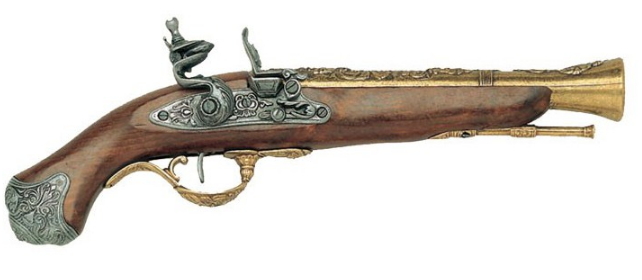
Conservation, collecting, and current trends
Today, interest in the blunderbuss is not limited to historians: the rise of vintage taste, the search for pieces with history, and the economics of handmade items have revalued replicas and restorations. Responsible conservation allows new life to be given to old pieces by avoiding manufacturing from scratch, which connects with sustainable practices.
In an expanding global e-commerce market, personalization gains importance: buyers and collectors seek unique finishes, faithful reconstructions, and the story accompanying the piece. A blunderbuss is not just metal and wood: it is a story in which the workshop and the artisan actively participate.
Restoration: what to observe
- Bore integrity: Avoid repairs that have modified the barrel’s historical profile.
- Original materials: Identify bronze versus steel and respect the surface treatment.
- Seals and marks: Manufacturer or arsenal marks tell the provenance and increase historical traceability.
- Safety: If it is a functional replica, ensure that transformations removed for safety are documented.
Cultural legacy and representation
In the collective imagination, the blunderbuss often appears alongside pirates, buccaneers, bandits, and sailors. This presence in literature and cinema has reinforced its romantic and fearsome aura: an instrument that announces close quarters combat, ambush, and desperate defense.
Beyond the narrative, its study allows for an understanding of the technological transition between siege artillery, muzzle-loading firearms, and the modernization that rifling and percussion would bring. The blunderbuss is, therefore, a prism through which to read tactical, economic, and cultural changes.
The essential thing: the blunderbuss tells a story of adaptability. It was born as a response to specific needs and remained where those needs persisted. This logic means that today, in the hands of artisans, restorers, and enthusiasts, the blunderbuss continues to fuel a passion for the tangible and the narrative.


